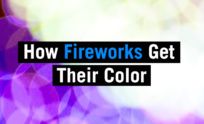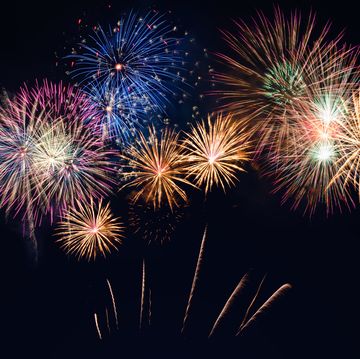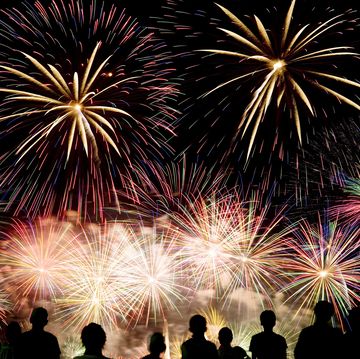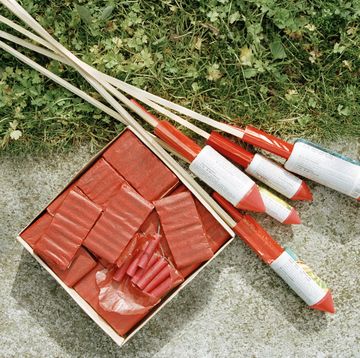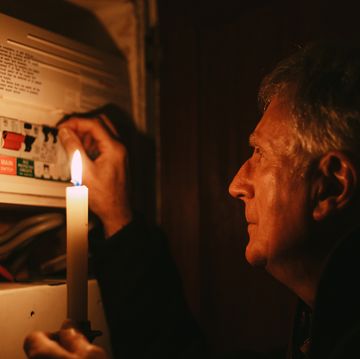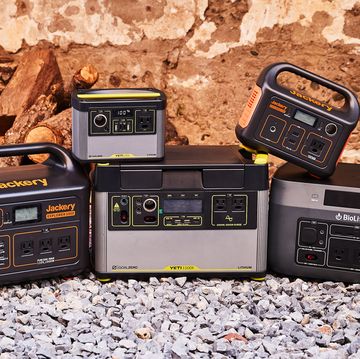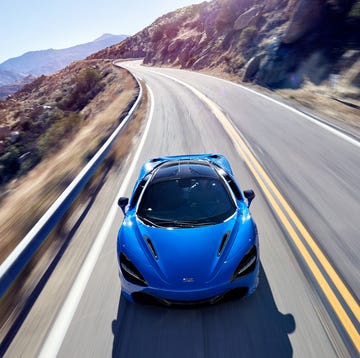Few things are more American than setting off fireworks on the 4th of July. They're the centerpiece of the holiday—most Independence Day celebrations end with a dazzling display of fireworks lighting up the sky in a mix of bright colors and booming explosions.
Because we associate fireworks with the 4th, you might be surprised to learn that they're not an American invention but a Chinese one and their origins began more than 2,000 years ago. In continuing with the tradition of being the OG's of fireworks, it makes sense that today, China produces and exports more fireworks than any other country in the world.
200 B.C.: It starts with a big bang. Bamboo thrown on a fire in China explodes as air expands inside the reeds, and rudimentary firecrackers are born. Locals decide they should be used to scare away evil spirits.
A.D. 600 TO 900: Things get pyrotechnical when a Chinese alchemist combines sulfur, saltpeter, and charcoal and sets it on fire. The more oxygen-rich the saltpeter, the bigger the explosion. Soon the Chinese pack powder, rocks, and metal into containers to make weapons.
1295: Marco Polo brings fireworks to Europe from the Orient. (Also: porcelain, jewels, spices, and other less exciting items that don't go boom.)
1400 TO 1500: The Renaissance begets unparalleled advances in art, literature—and fireworks. The Italians launch projectiles and burn powdered metals and charcoal slowly in open tubes to create sparklers. Controlled fires become de rigueur at coronations. Commoners miss out on the fun.
1635: John Bate publishes the four-part book series The Mysteries of Nature and Art. In part two, he outlines how to create flying dragons, along with other fiery spectacles. Among those the book inspires: a young Sir Isaac Newton.
1730s: Powder to the people! In England, fireworks shows become public spectacles for everyone to enjoy. Colonists bring them to the Americas, where they set them off on Independence Day 1777 and think, we should do this again next year.
1830s: Italian pyrotechnicians add color to fireworks with chlorinated powder and metallic salts (strontium = red, barium = green, copper = blue, sodium = yellow). Using potassium chlorate as an oxidizer makes the hues brighter.
1966: Cherry bombs, first used as weapons during the Civil War, are banned in the U.S. But until his death in 1978, Keith Moon, drummer of the Who, blows off steam—and blows up hotel toilets—with illegal cherry bombs.
1976: The U.S. Consumer Product Safety Commission requires fuses on consumer fireworks to burn for at least 3 seconds but no more than 9. Safety warnings on fireworks labels become protocol.
1999: Disney World launches fireworks with compressed air instead of gunpowder at Epcot's pyrotechnic spectacular IllumiNations: Reflections of Earth. Disney is the largest U.S. consumer of fireworks, making its theme parks the "happiest places on earth" for American pyromaniacs.
2008: The Chinese Olympic Committee admits that CGI was used to enhance fireworks footprints that appeared to walk across the sky for TV audiences and fans watching the Beijing stadium's Jumbotron. The New York—based Grucci family, who created the actual display, is not amused.
2010: Pop singer Katy Perry releases the empowering single "Firework," reportedly inspired by this passage (see below) from Jack Kerouac's 1957 novel On the Road.
"The only people for me are the mad ones, the ones who are mad to live, mad to talk, mad to be saved, desirous of everything at the same time, the ones who... burn, burn, burn like fabulous yellow roman candles exploding like spiders across the stars."
2014: The largest firework ever (at least at the time) was set off over Konosu city on the Japanese island of Honshu. The firework weighed a whopping 1,014-pounds and measured 2,624 feet in diameter.
2018: The United Arab Emirates (UAE) usurped the throne with their New Year's Eve firework that welcomed 2018. The 2,200-pound behemoth, which was launched from a 15,000-pound mortar cannon, set the Guinness World Record for largest firework ever.
Fireworks are fun, but they are also extremely dangerous if mishandled. According to the Consumer Product Safety Commission, 2009 saw nearly 9,000 Americans obtain a firework related injury with the largest portion of that group getting hurt in July. You should always adhere to the safety warnings on all fireworks and check with compliance laws in your state.

